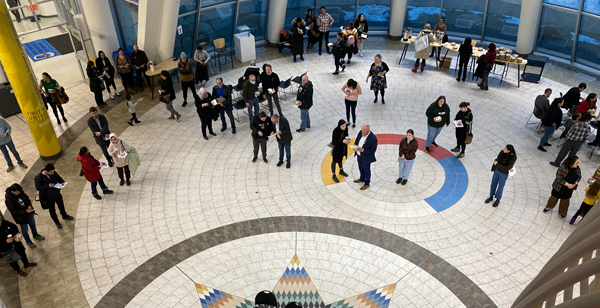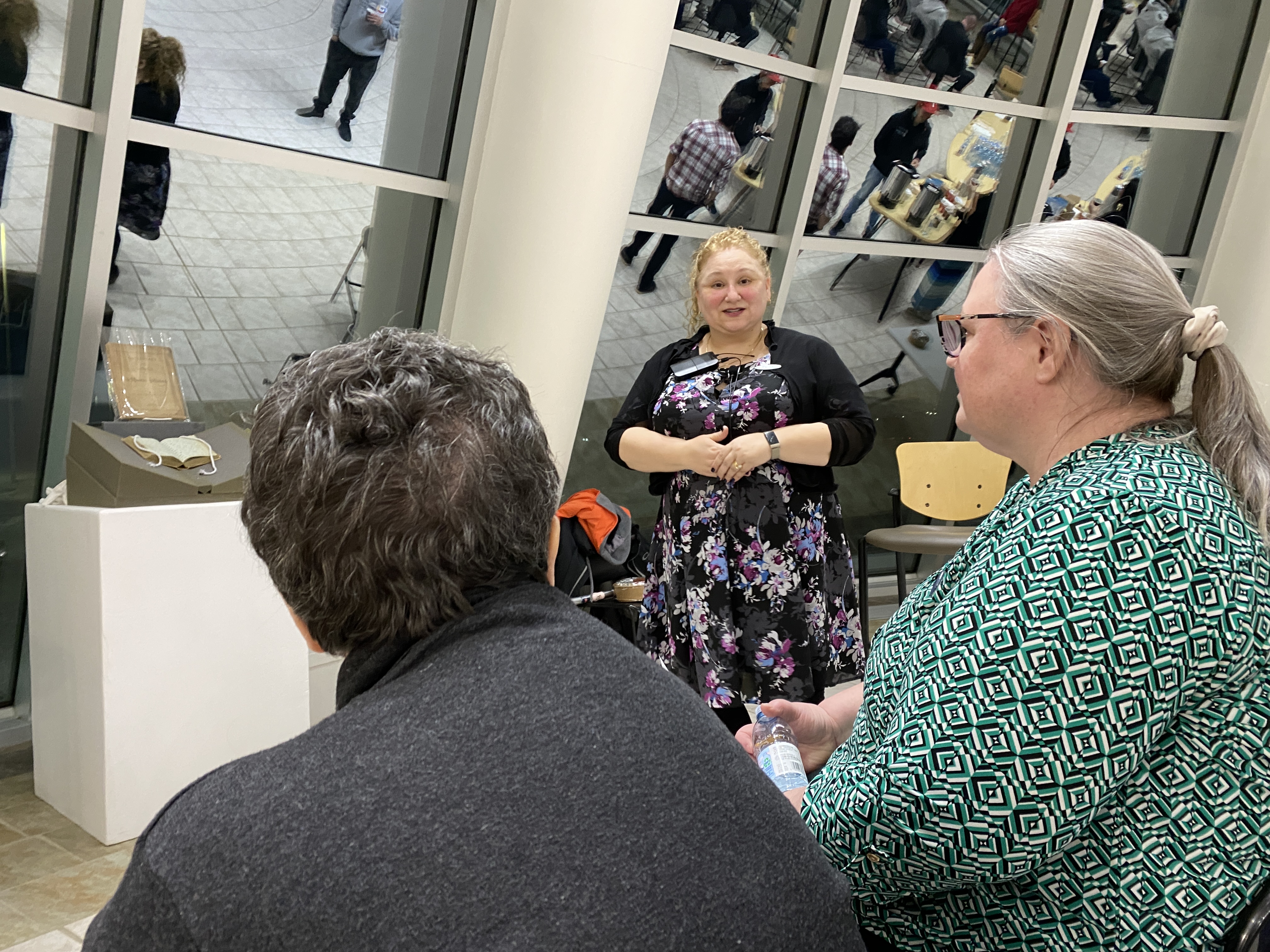ArtsyFACT artsyFICTION mixes art and storytelling to raise money
- Memory McLeod | May 04, 2023
Combine copper, turquoise, birchbark, sturgeon, otter and a few tall tales and what you have is artsyFACT artsyFICTION.
The First Nations University of Canada (FNUniv) hosted its second annual art fundraiser to support the Medicine of the Art fund.
ArtsyFACT artsyFICTION presenters were each given an item and they shared a story about its origin and purpose, which was either true or completely fabricated. The audience had to determine if the story was true or false.
One such object was an old, beat-up, beaded buckskin coat.
Questions about its origin led to a fictitious tale of the event’s organizer and head of FNUniv’s fine arts and communications department Audrey Dreaver’s famous ancestor.
In fact, the jacket was donated for art projects.
“The story we told was that the jacket belonged to James Isbister, the original Metis farmer who began the settlement that is now Prince Albert,” said Dreaver. “The story goes that he played a crucial part in convincing Riel to return to help the resistance. However, he didn’t believe that violence was the way forward and parted ways with Riel. So the roughed-up-looking jacket was more believable with the background story of the battles going on at the time. I think we fooled quite a few with that one.”
Those taken in by the yarn included participants such as artists, academics, students and members of the public.
The event was also a fun way to teach people how to look at art differently.
“We see art as living things, with meaning and energy, with a purpose,” said Dreaver. “It is interactive and alive. It’s not just some dusty thing on display in a museum, no – through it, understanding and appreciating it, we can reconnect with our ancestors.”
Cree Poet Laureate, Louise Bernice Halfe, a celebrity storyteller at the event, said artifacts are important because they preserve the history that is passed down orally rather than in written documents.
“If you pay attention, it will speak to you and tell you a little story about our planet,” she said.
Halfe, who’s own artwork includes stone carving, sculpture, fabric and writing, says the life and purpose of a material is unlimited to those with creative minds.
“I’ve been a supporter of the arts all my life,” she said. “It’s a value that was passed down from my mother. She used to take the seemingly unusable parts of a moose or deer, such as the hooves, and make purses out of them and use their guts to make baskets.”
Halfe carried on her mother’s ingenuity in her own art.
“I used to go to the thrift stores and buy old cowboy boots and make purses out of them,” she said.
The Medicine for Art is a special FNUniv fund used to cover travel and material costs for guest speakers and educators for unique workshops aimed to enhance the learning experience of fine arts students.
Leading up to artsyFACT or artsyFICTION, one such workshop on drumming took place.
Pura Fe, a Tuscarora and Taina, traditional singer-songwriter, taught students the history of drumming and singing throughout Indian country.
“In the beginning, we were a bit confused about whether women could play the drum (and) she told us that, historically in many tribes, it is the women who tended to do the drumming and singing,” said FNUniv arts student Amber Bear. “She told us that as beginners, not to worry about protocols but instead focus on finding our voices.”



